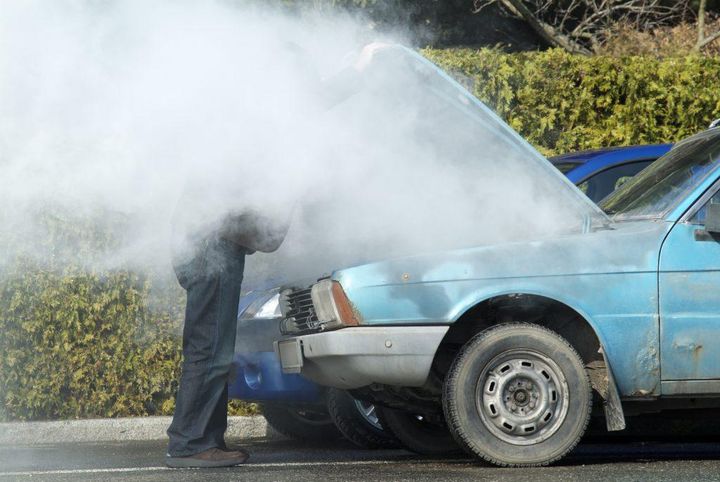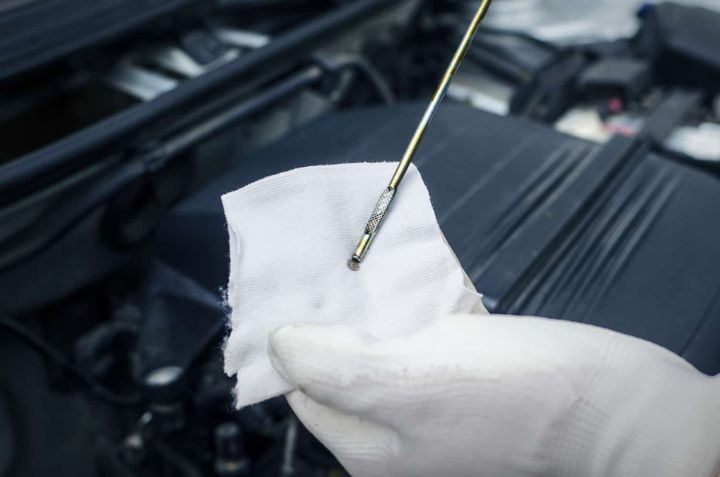


Transmission fluid is a vital component in a vehicle's transmission system, acting as a lubricant and hydraulic fluid. It helps ensure smooth gear shifts, prevents excessive wear and tear on the transmission components, and aids in cooling the transmission. Running a car without sufficient transmission fluid can lead to severe and costly damage to the transmission.

Transmission fluid serves two crucial functions within your car's transmission:
| Function | Description |
|---|---|
| Lubrication | It lubricates the intricate components within the transmission, such as gears, clutches, and bearings, reducing friction and wear. |
| Cooling | It helps dissipate the heat generated by these moving parts, preventing them from overheating and failing prematurely. |
Without sufficient transmission fluid, the components within the transmission are subjected to excessive friction and heat buildup. This can lead to accelerated wear, gear slippage, and ultimately, complete transmission failure.
There are two main reasons why a car might run low on transmission fluid:
A leak in the transmission system can cause fluid to slowly seep out over time. This can be caused by various factors:
Worn seals
Faulty gaskets
Cracks in the transmission case
If you notice a reddish fluid puddle underneath your car, it's a telltale sign of a transmission fluid leak.
Even without a leak, transmission fluid can become contaminated or break down over time due to:
Extreme operating conditions
Prolonged use
Contaminated fluid loses its lubricating and cooling properties, rendering it ineffective and potentially causing damage to the transmission components.
If you suspect an issue with your transmission fluid, there are several signs to look out for:
| Sign | Description |
|---|---|
| Low fluid level | Use the dipstick to check the transmission fluid level while the engine is running and the transmission is warm. If the level is low, it's a clear indication of a problem. |
| Leaks | Inspect the area underneath your car for any reddish fluid puddles or stains, which could indicate a transmission fluid leak. |
| Abnormal noises | Pay attention to any whining, grinding, or humming noises coming from the transmission, as these could be signs of internal damage or lack of lubrication. |
| Shifting issues | If you experience slipping, delayed engagement, or difficulty shifting gears, it could be a symptom of low or contaminated transmission fluid. |
If you've identified a transmission fluid issue, it's crucial to address it promptly to prevent further damage and costly repairs. Here are the steps you can take:

Locate and repair the source of the leak:
Replace faulty seals
Replace worn gaskets
Repair cracks in the transmission case
Once the leak is fixed, refill the transmission with fresh fluid.
Perform a complete fluid flush and refill with new fluid:
Drain the old, contaminated fluid
Thoroughly clean the transmission system
Refill with fresh, high-quality transmission fluid
In cases of severe internal transmission damage, a more extensive repair may be required:
Transmission rebuild
Disassemble the transmission
Replace worn or damaged components
Reassemble and refill with fresh fluid
Transmission replacement
Remove the old transmission
Install a new or remanufactured transmission
To avoid transmission fluid issues in the future, follow these preventive maintenance practices:
Follow the manufacturer's recommended transmission fluid change intervals
Check and top up the transmission fluid level regularly
Avoid towing heavy loads or driving in extreme conditions without proper maintenance
The cost of repairing transmission fluid issues can vary significantly depending on the extent of the damage and the type of vehicle you own. Here are some approximate costs to consider:
| Repair | Approximate Cost |
|---|---|
| Transmission fluid flush and refill | $100 - $300 |
| Seal or gasket replacement | $200 - $500 |
| Transmission rebuild | $1,500 - $4,000 |
| Transmission replacement | $2,000 - $6,000 (including labor) |
While these costs may seem daunting, it's important to remember that addressing transmission issues promptly can save you from even more expensive repairs down the line. Continuing to drive with low or contaminated transmission fluid can lead to catastrophic transmission failure, which could potentially cost you thousands of dollars more.
In the world of automotive mechanics, transmission fluid is often overlooked, but it plays a crucial role in keeping your car's drivetrain functioning smoothly. Neglecting transmission fluid maintenance can have severe consequences, leading to premature wear, gear slippage, and even complete transmission failure.
By being proactive and addressing any transmission fluid issues promptly, you can extend the lifespan of your transmission and avoid costly repairs. Regular fluid checks, timely fluid changes, and addressing any leaks or contamination issues are key to maintaining a healthy transmission.
Remember, your car's transmission is a complex and vital component, and taking care of it is an investment in the longevity and reliability of your vehicle. So, the next time you're tempted to ignore that transmission fluid warning light, think twice – your car's drivetrain will thank you for it.
Automatic transmission fluid is designed to lubricate and provide hydraulic pressure for automatic transmissions, while manual transmission fluid is a combination of motor oil and heavyweight hypoid gear oil for lubricating manual transmissions.
Look for reddish fluid puddles or stains underneath your car, and inspect the area around the transmission for any signs of leakage.
No, you should never mix different types of transmission fluid as they are formulated differently and mixing them can cause compatibility issues and potential damage to the transmission.
Overfilling the transmission fluid can cause foaming, which reduces hydraulic pressure and interferes with smooth shifting. It can also lead to seal failure and leaks.
If you notice severe shifting issues, grinding noises, or metal shavings in the fluid, it may indicate internal damage that requires a transmission rebuild or replacement.
It is generally not recommended to use additives or stop-leak products as they can cause further damage to the transmission and may void the manufacturer's warranty.
The transmission filter should be changed every time you perform a transmission fluid change, typically every 30,000 to 60,000 miles or as recommended by the manufacturer.
While it is possible to flush the transmission fluid yourself, it is generally recommended to have it done by a professional mechanic who has the proper equipment and expertise to ensure the job is done correctly.
Signs of a failing torque converter include slipping, shuddering, or vibrations when shifting gears, as well as a lack of power or acceleration.
Yes, synthetic transmission fluid can be used in older vehicles and may provide better protection and performance compared to conventional fluid, but it is important to follow the manufacturer's recommendations.

Sarah isn't your average gearhead. With a double major in Mechanical Engineering and Automotive Technology, she dived straight into the world of car repair. After 15 years of turning wrenches at dealerships and independent shops, Sarah joined MICDOT to share her expertise and passion for making cars run like new. Her in-depth knowledge and knack for explaining complex issues in simple terms make her a valuable asset to our team.








